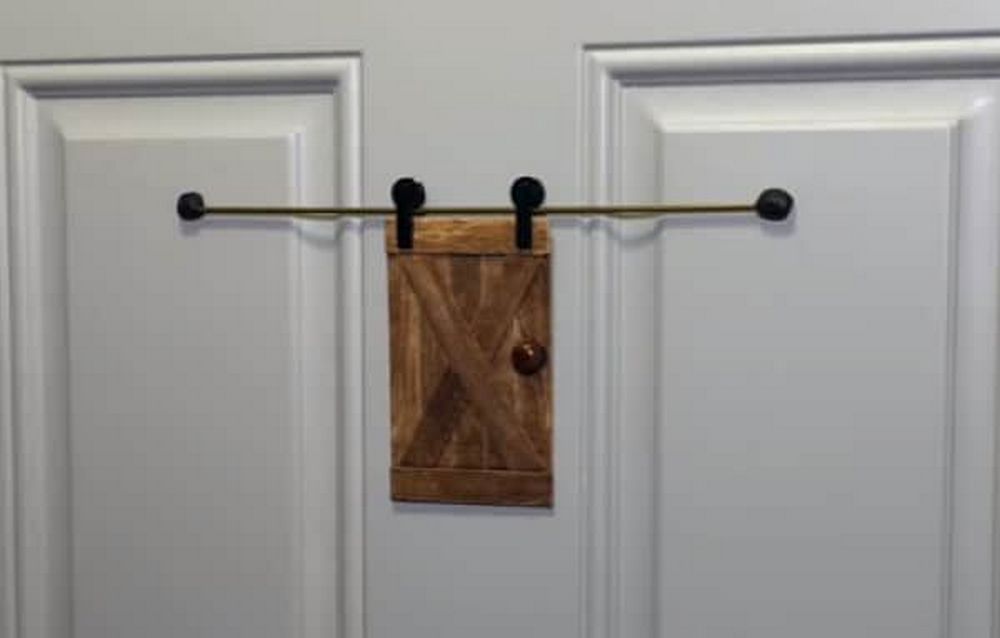
It seems like everyone is getting smarter and smarter each day. Of course, we have to thank our educational system for that and all the other factors contributing to our intelligence. However, it’s frustrating to know that some people use their intellect in a wicked way.
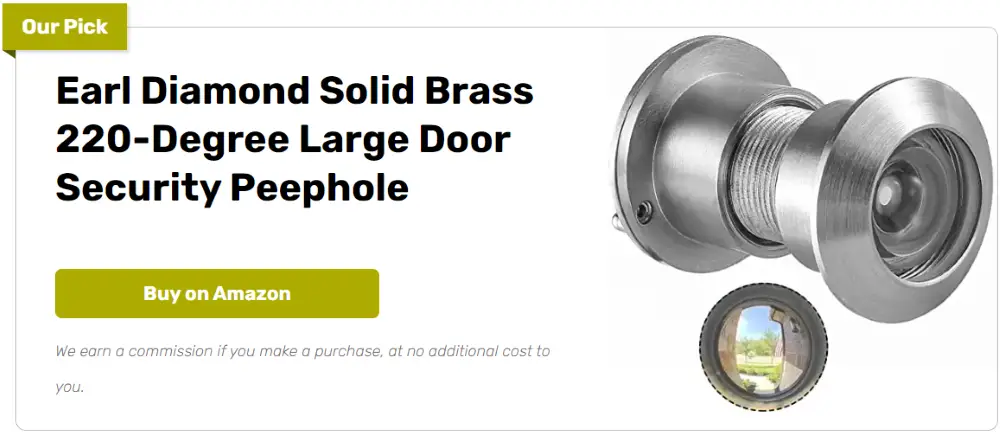
Did you know that door peepholes expose you to a security risk? Some people have thought of using these peepholes to intrude on another person’s privacy. They do it by placing a tiny camera on the peephole. Before you know it, they already know what’s happening inside the room or house.
A friend of mine had first-hand experience with this. It was nasty. Because I was afraid I’d experience the same, I immediately looked for ideas on how we can cover our door peephole. The most ideal one we’ve found was this barn door peephole cover which still allows us to use the peephole when needed. It’s a no-sweat DIY, assuring you that the cover stays in place even after you’ve shut your door.
Contents
Making a Barn Door Peephole Cover
Materials:
- (9) Large popsicle sticks
- Craft Glue
- Thick Metal Hanger
- Duct tape
- Rubber door stop
- Sugru Moldable Glue (pick a color that would complement your door)
- Wood stain
- (2) Lego gray half pin with stud
- (2) Lego black tile 1×4
- (2) Lego black wheel spoked small
Tools:
- Scissors
- Gloves (when staining or handling sugru)
Steps:
Step 1: Prepare the Popsicle Sticks
- Lay out the 9 large popsicle sticks side by side to form a small panel. This will be the sliding barn door.
- Apply craft glue along the edges of each stick and press them together. Allow them to dry completely for at least 30 minutes.
Step 2: Reinforce the Panel
- Cut two additional popsicle sticks into shorter pieces to serve as horizontal support beams across the panel.
- Glue these across the back of the assembled panel for added stability.
- Let the glue dry before proceeding.
Step 3: Stain the Wood
- Put on gloves and apply wood stain to the popsicle stick panel using a brush or cloth.
- Let the stain dry completely, following the recommended drying time on the product label.
Step 4: Create the Sliding Mechanism
- Take the thick metal hanger and straighten it out. Cut it into two equal pieces, long enough to create a track above your peephole.
- Bend the ends of each metal piece into small loops that will serve as stops to prevent the barn door from sliding off.
- Attach the metal hanger pieces to the door using Sugru Moldable Glue, ensuring they are positioned parallel to each other.
Step 5: Attach the LEGO Wheels for Sliding
- Take the two LEGO black wheel spoked small and attach them to the Lego gray half pins with studs. These will act as the rolling mechanism.
- Secure these wheel assemblies to the back of the barn door panel using Sugru Moldable Glue. Make sure they align properly with the metal hanger track.
Step 6: Secure the Barn Door Panel to the Track
- Position the barn door panel against the peephole and ensure the wheels align with the metal track.
- Slide the door back and forth to test the movement. Adjust the positioning if needed.
Step 7: Create a Door Stopper
- Cut a small piece of rubber door stop and glue it to the side where the barn door will stop when fully closed.
- Use duct tape to reinforce the stopper if necessary.
Step 8: Add Decorative Finishing Touches
- Attach the two LEGO black tile 1×4 pieces to the front of the barn door as faux hinges or accents.
- Double-check that the door slides smoothly and stays in place when closed.
Final Step: Test and Enjoy Your Peephole Cover
Once everything is dry and secure, slide your barn door cover open and closed to ensure it works properly. Now, you have a stylish and functional peephole cover that enhances both privacy and security.
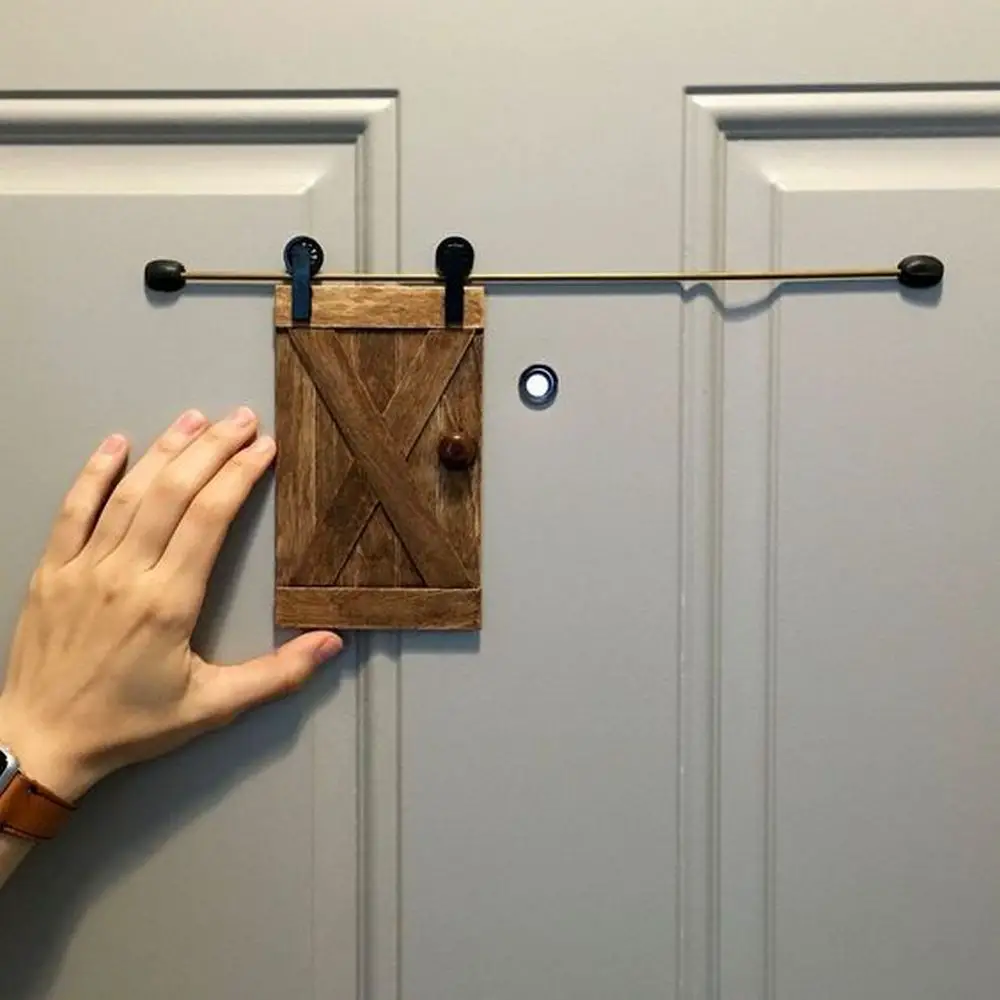
Why You Need a Peephole Cover: Understanding the Security Risks
Peepholes are a standard feature in many doors, allowing homeowners to see who’s outside without opening the door. However, they can also pose a security risk when left uncovered. Intruders and snoops have found ways to exploit peepholes, turning them into a privacy vulnerability. A simple peephole cover can prevent this and enhance your home security.
How Peepholes Can Be a Security Risk
Most people assume that a peephole only works one way, but with the right tools, someone outside can see into your home. Reverse peephole viewers, small optical devices that fit over the peephole lens, allow intruders to look inside. This means that anyone standing at your door could observe your activities and determine whether you are home or alone.
Protecting Your Privacy from Prying Eyes
Leaving your peephole uncovered makes it easy for unwanted individuals to monitor your home. They can take note of your daily routine, track when you leave and return, or even identify valuables inside. A simple cover prevents anyone from using a reverse viewer and ensures that your privacy remains intact.
Blocking Unauthorized Surveillance
Mini cameras and surveillance devices have been seen used by criminals to take advantage of peepholes. These gadgets may be subtly fitted over the peephole to offer a live view of the inside of your house. This type of illegal monitoring might compromise your security, particularly if the film is utilized for break-through planning. A peephole cover serves as a physical barrier preventing outside devices from gathering footage.
Preventing Light from Giving Away Your Presence
A peephole can let light from within your house be seen from the outside at night or under low illumination. Should someone be standing at your door, they may see the shift in light as you approach, thereby exposing that someone is within. A cover solves this by darkening and hiding the peephole.
An Easy and Affordable Security Upgrade
Although many security improvements call for costly technology or expert installation, a peephole cover is an easy and reasonably priced approach to increase privacy. These little additions—a sliding barn door cover, a magnetic alternative, or a hinged flap—offer peace of mind without sacrificing budget.
Though it is supposed to guard you, a peephole can become a security flaw without appropriate shielding. By installing a peephole cover, you can keep control of your privacy and preserve home safety.
Barn Door Peephole Cover Gallery
Click on any image to start the lightbox display. Use your Esc key to close the lightbox.


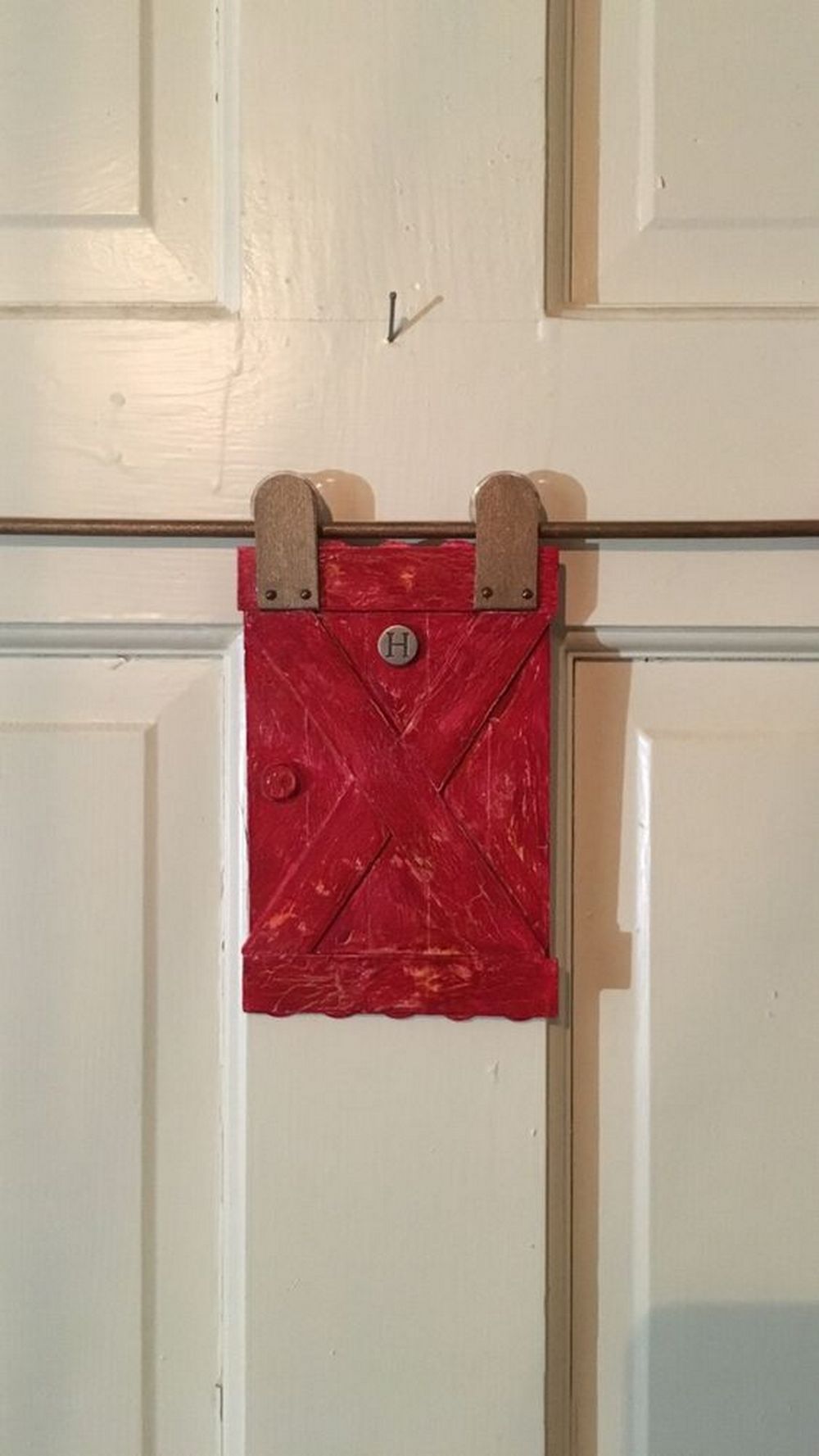
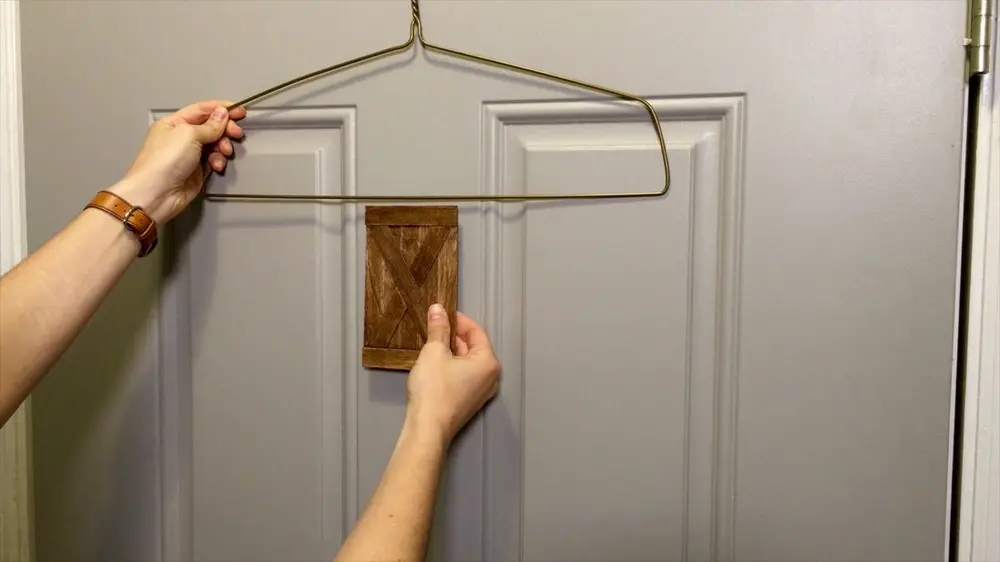
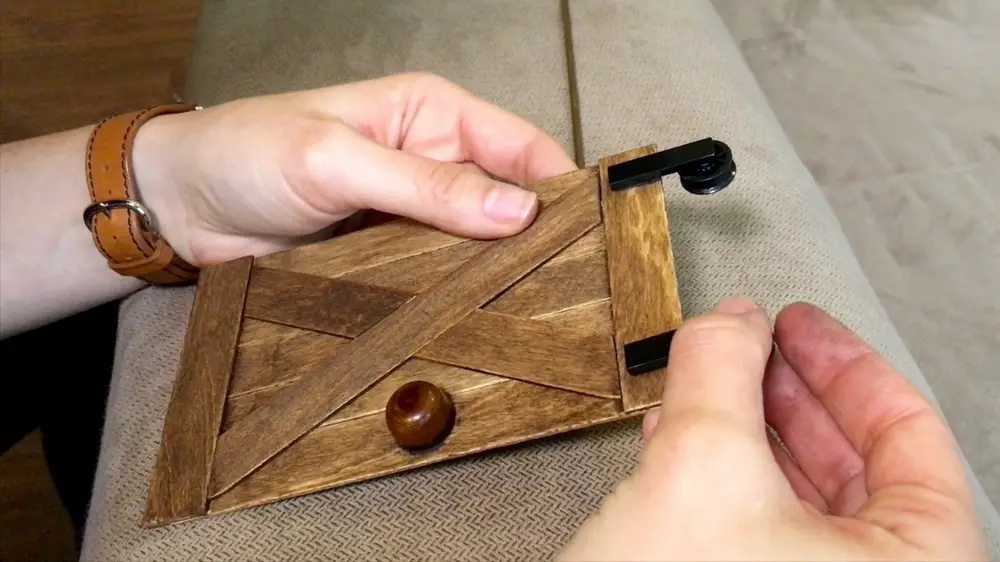
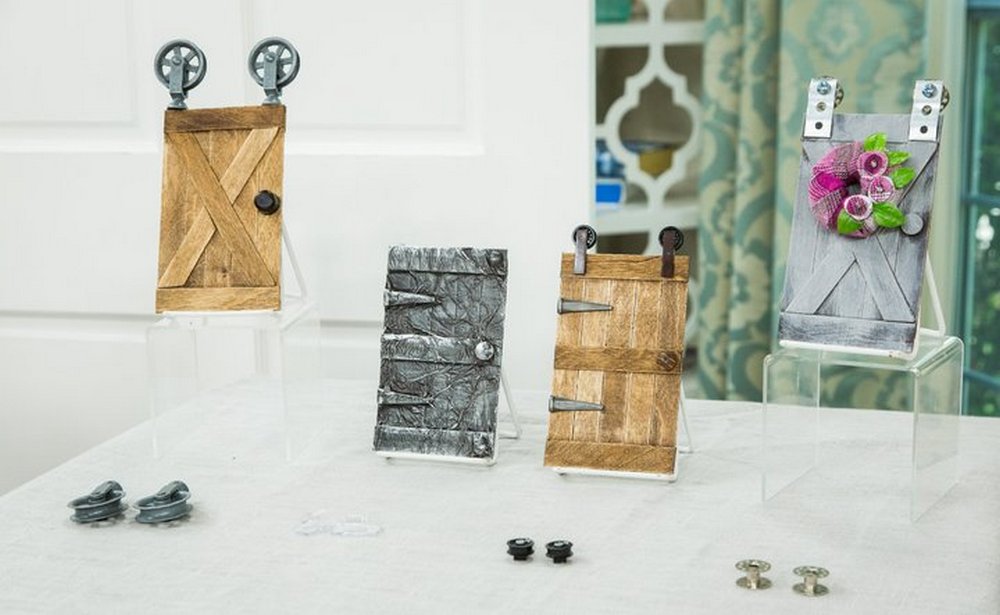
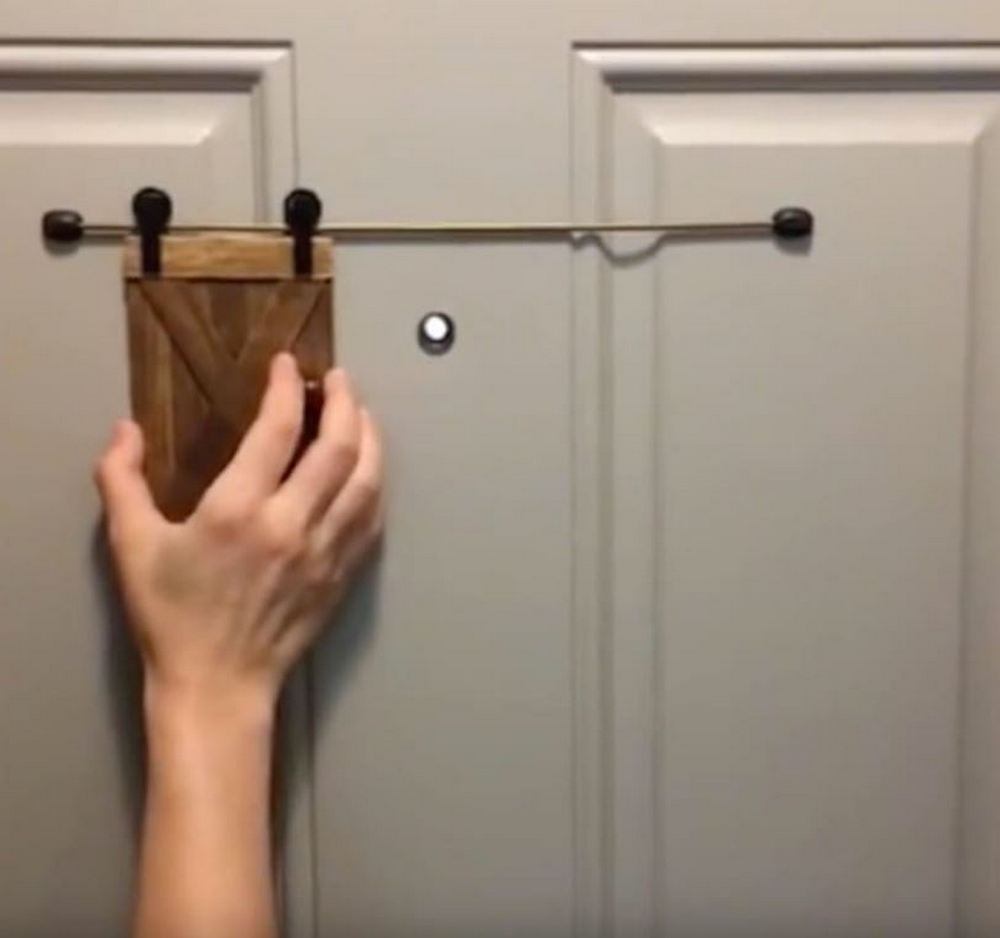
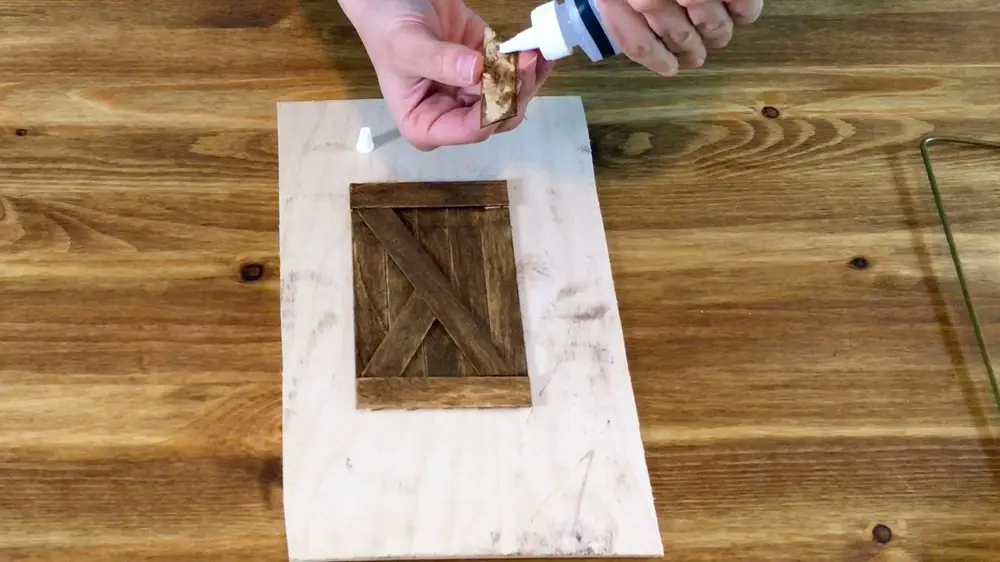
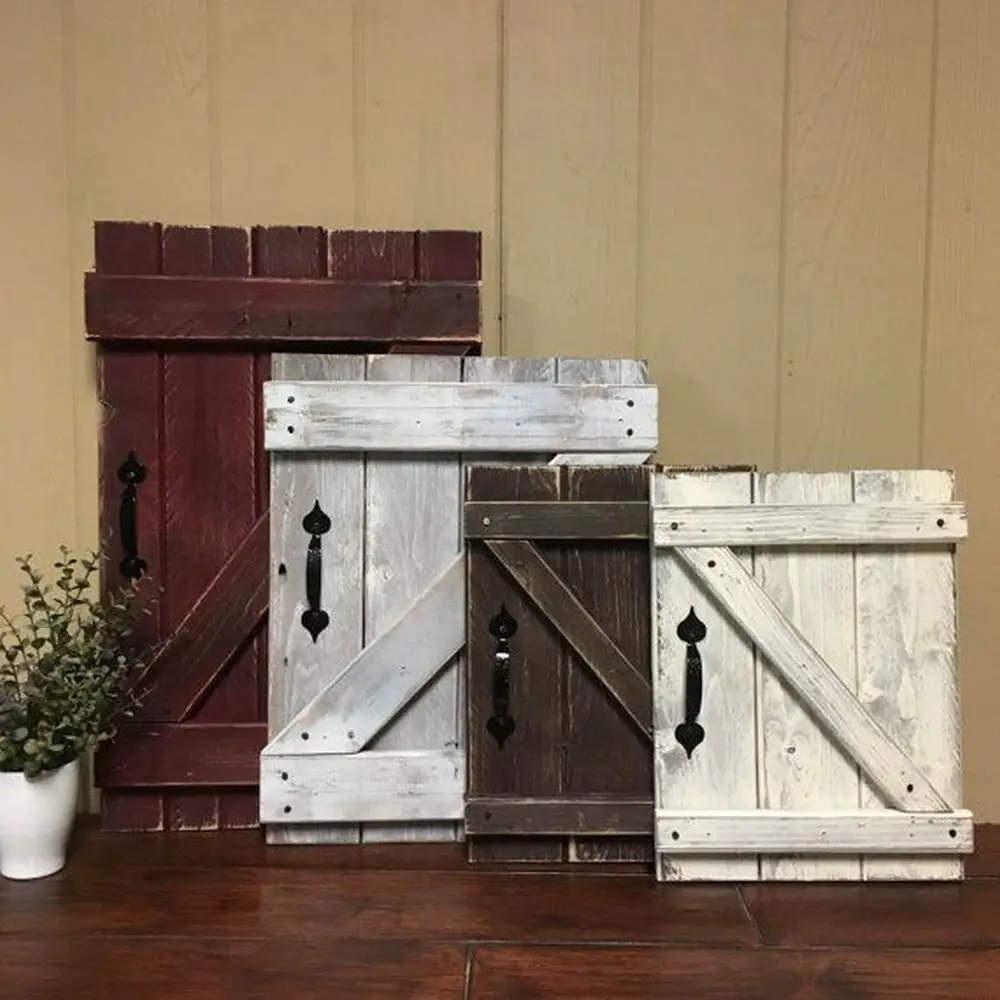
Upcycling Materials for a Barn Door Peephole Cover
A rustic peephole cover adds charm to your door while enhancing security. Instead of buying new materials, you can upcycle old or discarded items to create a unique and functional design. This approach not only saves money but also gives new life to materials that would otherwise go to waste.
Reclaimed Wood for a Vintage Look
Old wooden planks, pallet scraps, or even broken furniture pieces can serve as the perfect material for a rustic peephole cover. Look for weathered wood that already has character, such as natural grain patterns, knots, or distressed edges. A quick sanding and a coat of wood stain or wax will enhance the wood’s natural beauty while keeping its aged charm intact.
Metal Hardware for an Industrial Touch
If you have leftover hinges, drawer pulls, or decorative brackets, these can add a vintage-industrial feel to your peephole cover. An old metal latch or a section of an antique hinge can function as a sliding or swinging cover. Rusty or tarnished pieces can be cleaned and sealed with a clear coat to maintain their aged look without further deterioration.
Leather Scraps for a Soft and Unique Cover
Repurposing old leather belts, wallets, or jackets can create a flexible and durable peephole cover. Cut a small section of leather and attach it with screws or small nails for a simple flap-style cover. The natural wear and patina of aged leather give it an authentic rustic appeal.
Upcycled Hardware and Gears for a Barn Door Look
For those who love a farmhouse aesthetic, using old barn door hardware, pulleys, or small gears can create a one-of-a-kind peephole cover. Even small metal wheels from an old toy or furniture casters can be repurposed into a sliding mechanism. Attaching the cover to a metal rail or track made from scrap materials will make it both functional and visually striking.
Mason Jar Lids and Tin Pieces for a Vintage Feel
A repurposed mason jar lid or a section of an old tin can work as a creative peephole cover. These materials are lightweight and easy to attach, and they instantly add a rustic farmhouse touch. A little distressing with sandpaper or a light patina finish can give it an antique look.
Repurposed Cabinet Handles or Hooks for a Sliding Cover
Old drawer handles, cabinet knobs, or even curtain hooks can be used to create a simple sliding cover. Attaching a small handle to a wooden or metal cover makes it easy to open and close while keeping the design cohesive with the rustic theme.
Personalizing Your Upcycled Peephole Cover
Once your peephole cover is assembled, you can personalize it further. A simple wood-burning design, hand-carved details, or a branded monogram can make it even more unique. If you prefer a painted look, distressing techniques like dry brushing or chalk paint can enhance its rustic charm.
Upcycling materials for a rustic peephole cover is a creative way to combine functionality with character. With a little imagination, everyday objects can be transformed into a stylish and secure addition to your home.
Best Wood Stains and Finishes for a Barn Door Peephole Cover
A well-crafted barn door peephole cover should be both functional and visually appealing. The right wood stain and finish can enhance its rustic charm while protecting it from wear and tear. Choosing a stain that complements your door and a durable finish that resists scratches will ensure your peephole cover lasts for years.
Oil-Based vs. Water-Based Stains
When selecting a stain, you must decide between oil-based and water-based options. Oil-based stains penetrate deeper into the wood, providing rich color and long-lasting durability. They take longer to dry but offer better moisture resistance. Water-based stains dry faster, have a lower odor, and are easier to clean up, making them ideal for indoor projects where ventilation may be limited.
Top Wood Stains for a Rustic Look
- Dark Walnut Stain – This stain enhances the wood grain while giving a deep, rich brown tone that complements rustic and farmhouse-style decor.
- Golden Oak Stain – A lighter stain that highlights natural wood patterns and adds warmth without overpowering the design.
- Weathered Gray Stain – Perfect for achieving a vintage, aged look that mimics reclaimed wood. It pairs well with doors in neutral or gray tones.
- Ebony or Classic Black Stain – Provides a bold, dramatic look that contrasts nicely with lighter doors while maintaining a rustic edge.
- Antique White or Pickled Oak Stain – Ideal for a distressed or whitewashed effect, giving your peephole cover a more subtle, farmhouse-style charm.
Applying the Stain for Best Results
- Sand the wood surface – Smooth out rough edges and open the wood pores for better stain absorption.
- Apply the stain with a brush or cloth – Work toward the grain, wiping off excess stain to achieve the desired shade.
- Let it dry completely – Follow the drying time recommended by the stain manufacturer before applying a finish.
Choosing the Right Protective Finish
Adding a finish is essential to ensure your peephole cover stands up to daily use. Different finishes offer varying levels of protection and sheen.
- Matte or Satin Polyurethane – A great choice for a natural, low-gloss look with strong durability. It resists scratches and moisture, making it ideal for high-touch areas.
- Tung Oil or Linseed Oil – These penetrating finishes provide a soft, hand-rubbed feel while enhancing the wood’s natural grain. They offer moderate protection and work well for a more traditional rustic look.
- Wax Finish – Gives a smooth, subtle sheen while adding a layer of protection. Wax is best for light-use areas and can be reapplied as needed.
- Shellac or Lacquer – Fast-drying options that create a hard, protective barrier with a slight sheen. These are ideal for preserving wood color without darkening it.
Sealing and Maintaining the Finish
Once the finish is applied, allow it to cure fully before installing your peephole cover. Regular dusting and occasional wax or oil-based finishes reapplication will keep it looking great. If the stain begins to fade over time, a light sanding and re-staining can refresh the appearance.
Selecting the right stain and finish improves the aesthetics of your peephole cover and ensures it remains durable and resistant to everyday use. Whether you prefer a rich, dark walnut or a soft, weathered gray, the right combination will make your DIY project both stylish and long-lasting.
Conclusion
Building a barn door peephole cover is a simple yet effective way to enhance both privacy and home security. With the right materials, stain, and finish, you can create a functional cover that blends seamlessly with your door while adding a rustic touch. A well-crafted peephole cover not only protects against prying eyes but also serves as a stylish and durable addition to your entryway.
There are more decorative security measures you can have at home. Check out our collapsible garden trellis guide next!





